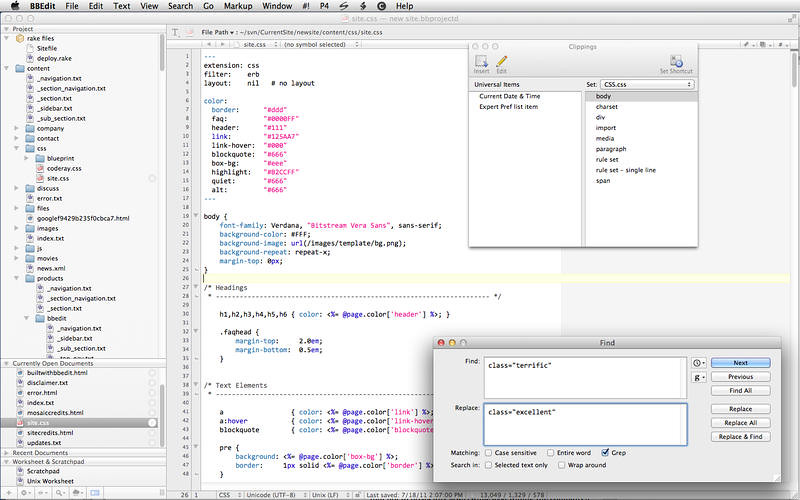

Here, select the Services menu and scroll down to find New Terminal at Folder. To do this, head to System Preferences -> Keyboard. The only problem is that really learning emacs will take you years, and you might have other things to do with your life. You can do this by adding a right-click shortcut. And if you really learn emacs, you can start using Aquamacs in the GUI, and programming it to automate all your tedious text editing, and so on.
MAC OPEN BBEDIT FROM TERMINAL MAC
It's also nice that its weirder keystrokes (like ^A-F for cursor movement) are the same as the Terminal command line, libreadline, native Mac GUI text controls, and Firefox text controls. not set up your own Mac as a local server, you should absolutely explore this option.

When you first run the application, you're asked whether you want. The BBEdit command line tool will launch BBEdit and open the files. Since version 6.5 (I believe) BBEdit has come with a command line. In BBEdit, go to File > Open Hidden and locate your file, or you can use the command line. open -a BBEdit test.txt Lauch BBEdit and load the specified file from home. open -a BBEdit Just launch the app, no file specified. However, it is by far the hardest to learn when you've coming from a GUI background-the idea that you can't enter or edit text in your text editor except by entering special modes is just weird.Įmacs (and its relatives and simplified clones, like jove and ue) is the most efficient for doing complex operations. You can use BBEdit as your default shell (terminal) editor instead of pico by setting the EDITOR environment variable to BBEdit. open -a Safari The default path is /Applications 2. And ultimately, most vi key sequences also work with ed and sometimes even sed, which is really handy when you're stuck on a terminal with full-screen support at all. It's also much more usable from bizarre terminals like your favorite iPad ssh client (where hitting ^X is a major chore). Vi (and its relatives-in fact, usually you're using vim, not vi) is the most ubiquitous, and by far the most efficient for quick and simple edits. However, it's the least ubiquitous, and the least efficient with both keystrokes and screen real estate, and real Unix geeks will laugh at you if they ask "vi or emacs" and you say "nano". Nano (and its relatives in the pico family) is by far the easiest to learn if you're coming from a TextEdit/TeachText/Notepad background.
MAC OPEN BBEDIT FROM TERMINAL HOW TO
In fact, ideally you should learn the basics of all three-at least how to get out safely-because at some point, you're going to accidentally visudo with VISUAL unset or set wrong and find yourself in the wrong editor. There are lots of full-screen text editors, but if you want to edit files locally on your Mac and while ssh'd into a remote server without having to think about it, you really have to learn one of the ubiquitous editors.


 0 kommentar(er)
0 kommentar(er)
